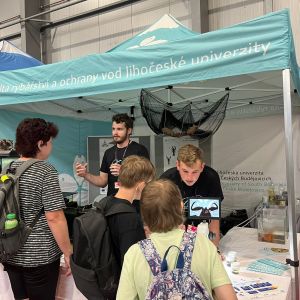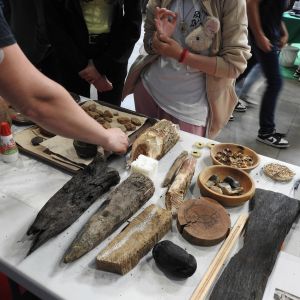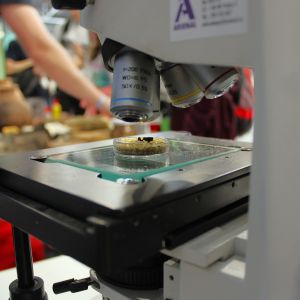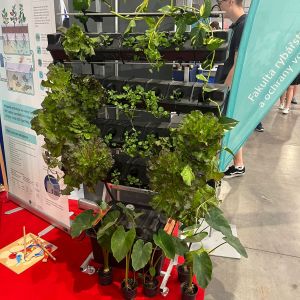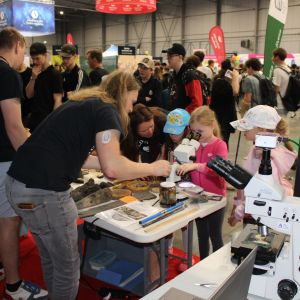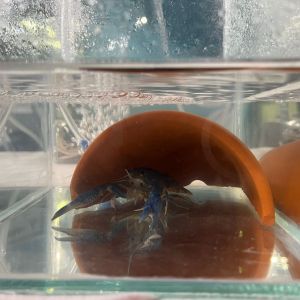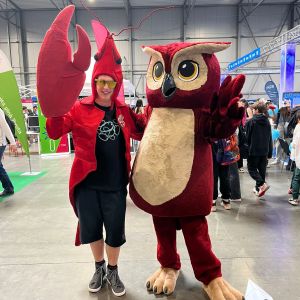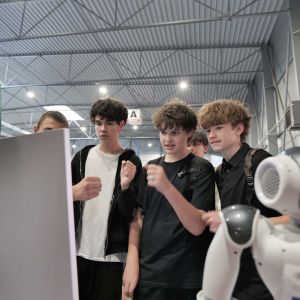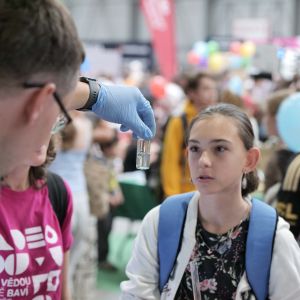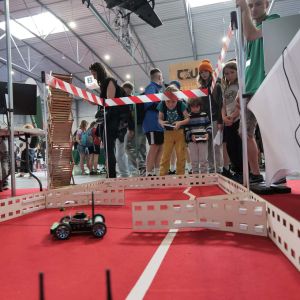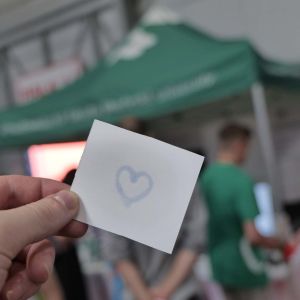Science Fair 2025
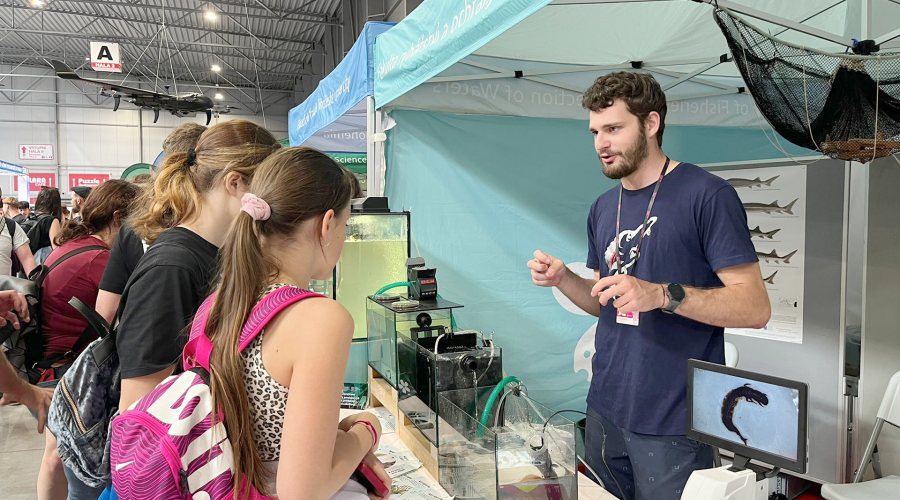
The University of South Bohemia in České Budějovice presented itself at this year's „Science Fair 2025 on 5-7 June through its three faculties - the Faculty of Fisheries and Protection of Waters, Faculty of Science and the Faculty of Arts. Visitors had the opportunity to peek into the world of science through interactive demonstrations, modern technologies and fun activities for children and adults.
Faculty of Fisheries and Protection of Waters USB
The Faculty of Fisheries and Protection of Waters USB brought to the fair a model of a recirculating aquaculture system (RAS) and a model of aquaponics, thanks to which visitors learned how aquaculture works and what chemical processes enable plant growth in an aquatic environment.
Children could play fun games on a magnetic board called ‘What will the fish have for dinner?’ and ‘What does an aquaponist grow and breed?’, for which they took away small souvenirs.
However, the aquariums with sturgeons attracted the most attention, where visitors learned more about their return to the wild or about the production of Sturgeon friendly caviar. Also interesting were two crayfish, which represented the issues of conservation of native species, invasive species and crayfish plague.
🎙 There was also a live broadcast from the Science Fair for Czech Radio Plus - the programme Věda Plus. The entry of the Faculty of Fisheries and Water Conservation started at 13:53 and is available online:
🔗 Recording of Science Plus - 6 June 2025
Faculty of Science USB
The Department of Chemistry offered visitors the opportunity to experience the preparation of Tollens reagent and the subsequent coating of a test tube with elemental silver. Interested visitors could also make invisible ink from red cabbage, write a secret message and make it visible through a chemical reaction. Visitors took away both creations as original souvenirs. A demonstration of the so-called chemical chameleon - a colourful reaction demonstrating changes in oxidation states - also aroused great interest.
The Department of Computer Science presented a wide range of technologies and projects in which students can actively participate during their studies. Among the biggest attractions were the humanoid robot Nao, which answered visitors' questions, as well as Jetbots and Jetracers - small autonomous vehicles equipped with cameras and a computing unit. Some of them were able to independently follow a path or react to their surroundings using artificial intelligence, while others allowed visitors to try driving themselves, which particularly excited children.
A neural network face-changing application also attracted attention, demonstrating the possibilities of real-time image processing. The rock-paper-scissors game against artificial intelligence, which was able to react to the player's behaviour - for example, after an inappropriate gesture, it got ‘angry’ and stopped giving a chance to win.
For technically oriented visitors there were demonstrations of working with a 3D printer, 3D scanner, mobile robotic chassis with a robotic arm and also with a UAV (drone).
Faculty of Arts USB
The Institute of Archaeology of the Faculty of Arts JU introduced visitors to modern and innovative methods in archaeology, which allow to investigate finds with unprecedented accuracy. Instruments such as microscopes or laser profilers were on display, as well as scientific methods such as dendrochronology (dating based on wood rings) and archaeobotany (the study of plant remains and their relationship to man).
The practical part of the exposition offered the opportunity to grind grain using a replica of a stone mill from the Iron Age, which visitors enthusiastically tried.

